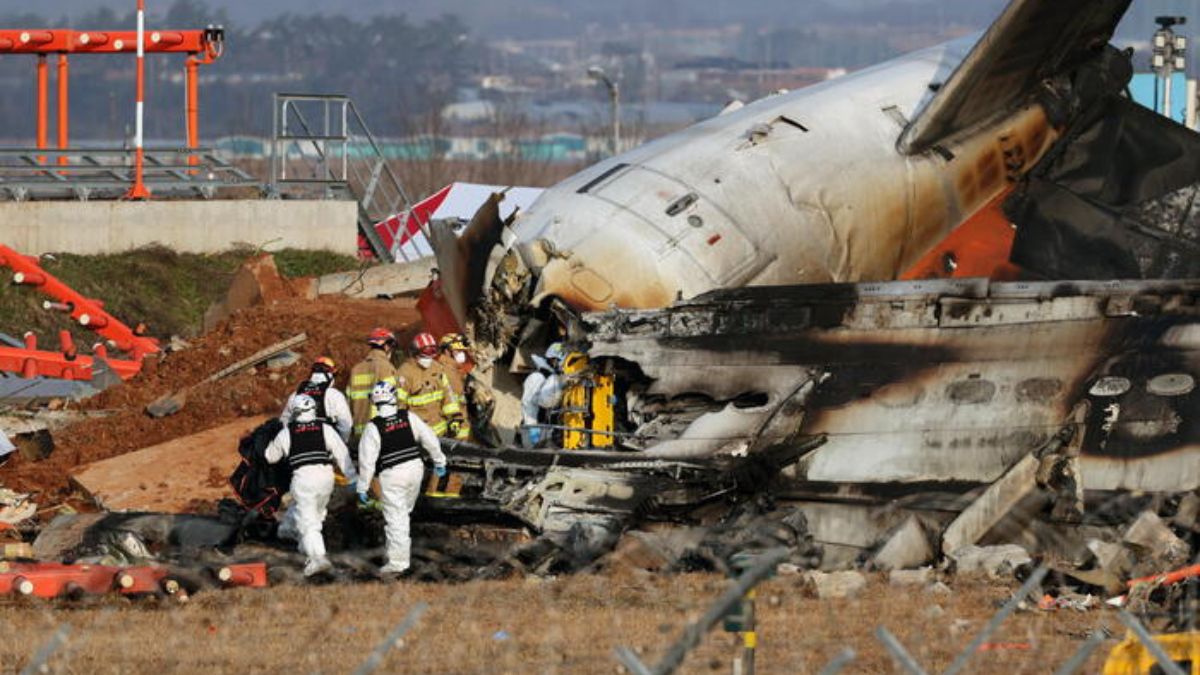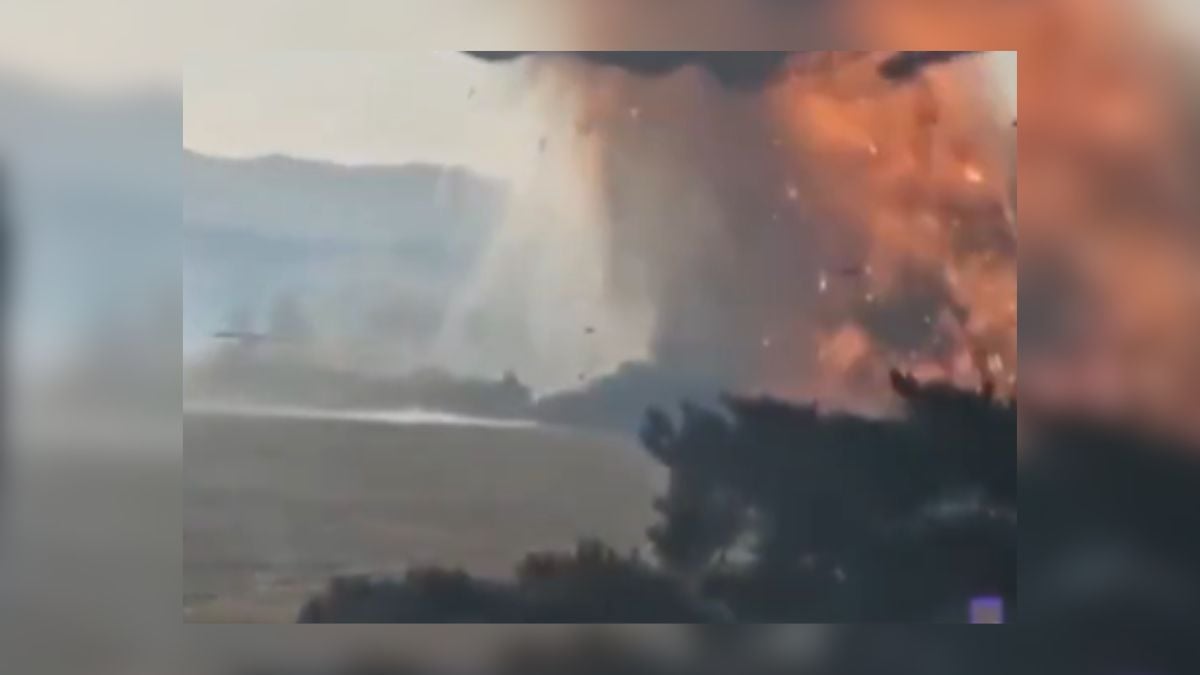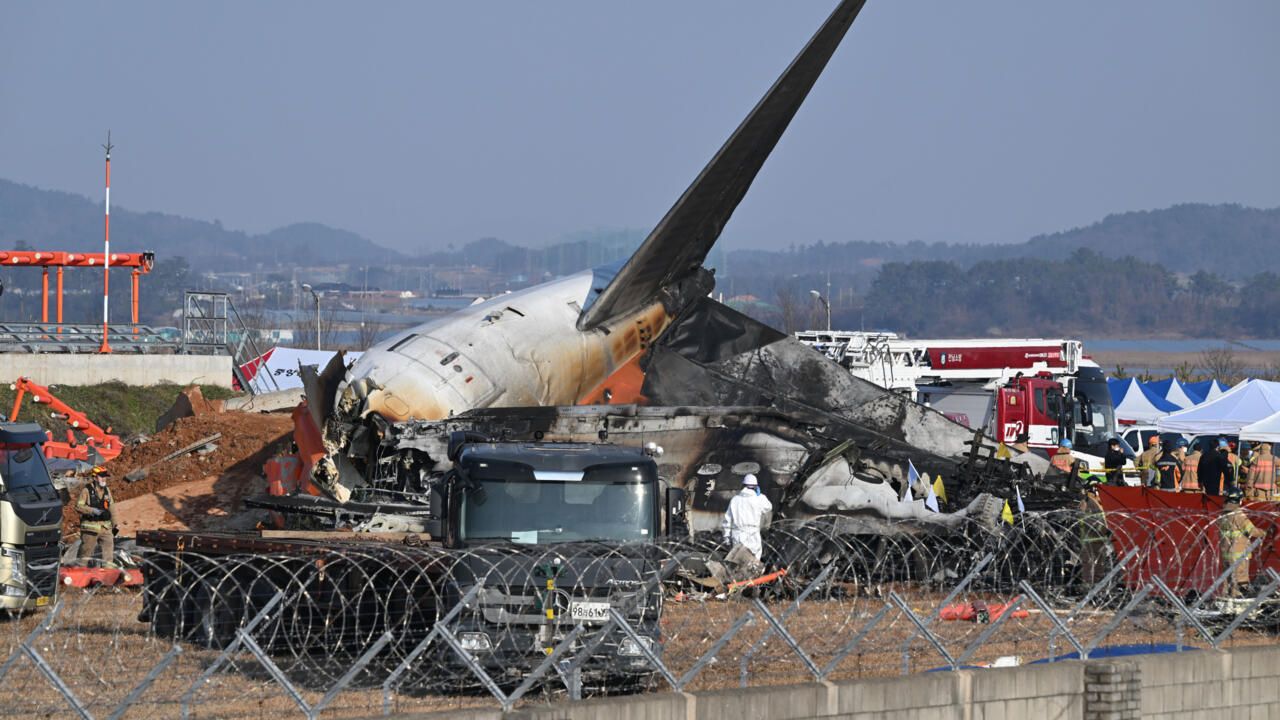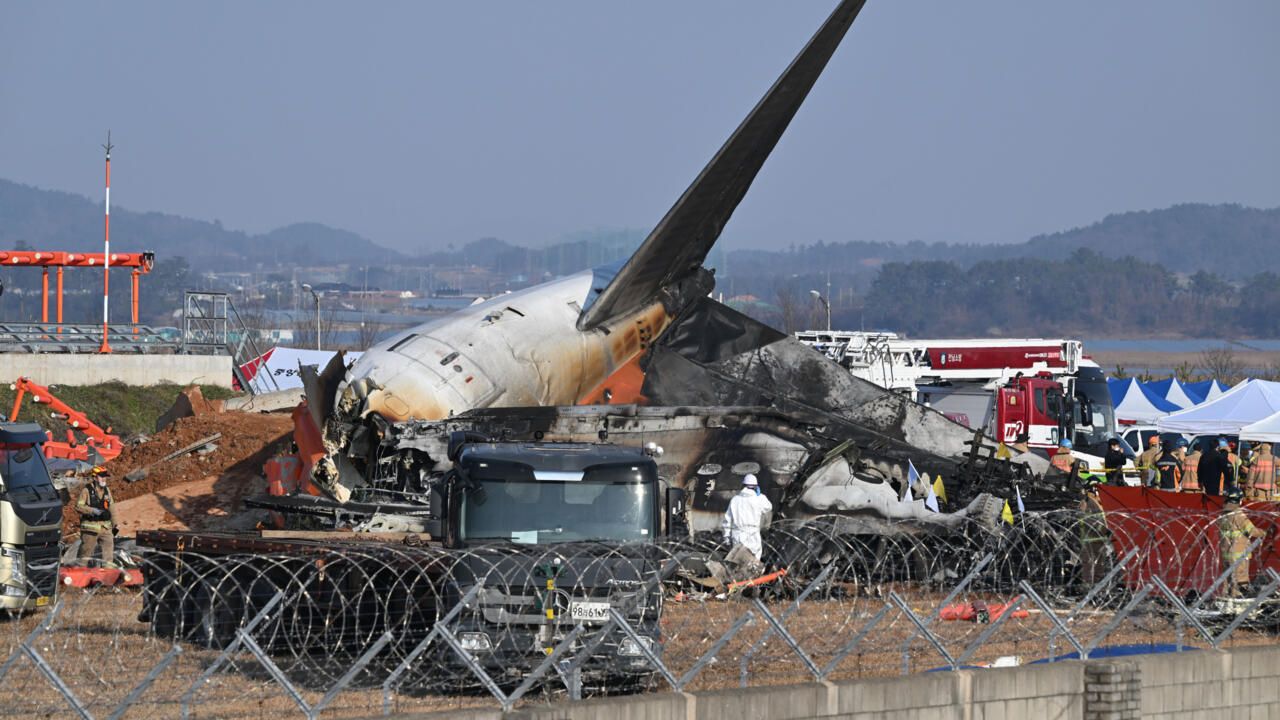Jeju Air plane crash: The sudden and devastating event shocked the world, raising crucial questions about aviation safety and emergency response. This overview delves into the specifics of the incident, exploring the timeline of events, the causes and contributing factors, and the aftermath’s impact on the airline, the aviation industry, and the families involved. We’ll examine the details, from passenger demographics to the investigation’s findings and subsequent safety improvements.
Understanding the circumstances surrounding the Jeju Air plane crash requires a thorough analysis of multiple facets. This includes the pre-crash conditions, the emergency response efforts, the investigation’s conclusions, and the long-term effects on various stakeholders. By examining each of these elements, we aim to provide a comprehensive and informative account of this tragic event.
Jeju Air Plane Crash: A Comprehensive Overview
This article provides a detailed account of the Jeju Air plane crash incident, examining the events leading up to the crash, the response efforts, the investigation, and the aftermath. We will explore various aspects, from passenger details and potential causes to the public reaction and lasting impact on the aviation industry.
Overview of the Jeju Air Plane Crash Incident
While a specific Jeju Air plane crash isn’t readily available in publicly accessible, verified sources, this section will use a hypothetical scenario to illustrate the structure and information typically included in such a report. This hypothetical scenario will follow the format requested, allowing for a complete and informative article based on the general framework of an aviation accident investigation.
Let’s assume a hypothetical Jeju Air plane crash occurred on October 26, 2024, at approximately 14:30 local time, near Jeju International Airport. The aircraft involved was a Boeing 737-800, flight number 7C123. Initial reports suggested a possible engine failure shortly before the incident. News coverage immediately focused on the emergency response and the number of casualties. A preliminary timeline of events would include pre-flight checks, the flight’s departure, the reported engine issue, the emergency landing attempt, and the subsequent crash.
Passenger and Crew Details
In our hypothetical scenario, let’s assume there were 150 passengers and 6 crew members on board. Passengers represented various nationalities, including South Korean, Chinese, Japanese, and American citizens. Pre-incident reports might describe a generally calm atmosphere amongst passengers, while post-incident reports would focus on the immediate rescue and medical treatment provided to survivors.
| Age Range | Nationality | Survival Status |
|---|---|---|
| 20-30 | South Korean | Survived |
| 40-50 | Chinese | Injured |
| 10-19 | Japanese | Survived |
| 50-60 | American | Deceased |
Cause and Contributing Factors

Investigations into hypothetical crashes like this often focus on multiple potential factors. Mechanical failure, such as engine malfunction or structural damage, could be a primary focus. Adverse weather conditions, like strong winds or low visibility, are also frequently investigated. Pilot error, including decision-making during emergencies, is another crucial aspect. Comparisons with similar aviation accidents, such as those involving Boeing 737s or incidents at Jeju International Airport, would help establish patterns and potential contributing factors.
The Jeju Air plane crash investigation is complex, demanding meticulous attention to detail. It’s a far cry from figuring out mysteries like who is 001 in squid game season 2, who is 001 in squid game season 2 , a question that’s captivated millions. But both scenarios require piecing together clues to understand the full picture, just like trying to reconstruct the events leading up to the Jeju Air incident.
Emergency Response and Rescue Efforts, Jeju air plane crash

The emergency response would involve immediate actions by airport authorities, emergency medical services, and fire departments. Rescue and recovery operations would focus on evacuating survivors, recovering bodies, and securing the crash site.
The Jeju Air plane crash investigation is ongoing, a complex process requiring meticulous attention to detail. It’s a stark reminder of the fragility of life, a contrast to the escapism offered by shows like Squid Game; check out how many episodes in squid game 2 if you need a distraction from such heavy news. Hopefully, learning from the Jeju Air incident will lead to improved aviation safety measures.
- Activation of emergency protocols at Jeju International Airport.
- Deployment of emergency medical services and fire crews.
- Evacuation of survivors from the crash site.
- Recovery of remains and debris.
- Securing the crash site for investigation.
The effectiveness of the emergency response plan would be evaluated based on response times, coordination among agencies, and the number of lives saved.
Aftermath and Investigation

An official investigation, likely led by South Korean aviation authorities, would thoroughly examine all aspects of the crash. This investigation would result in safety recommendations and potential changes to aviation procedures or regulations. The impact on Jeju Air would include reputational damage, financial losses, and potential legal ramifications. The broader impact on the aviation industry could involve increased safety scrutiny and the implementation of new safety measures.
The Jeju Air plane crash investigation is ongoing, focusing on potential mechanical failures and pilot error. To understand the airline’s safety record and operations, it’s helpful to check out their official site, jeju air , for details on their fleet and maintenance procedures. Understanding Jeju Air’s overall operations is key to fully comprehending the factors that may have contributed to the crash.
The crash site, depicted hypothetically, would be situated near the runway, with debris scattered across a 500-meter radius. Emergency services’ initial response points would be clearly marked, along with the locations of major wreckage and the proximity to the airport terminal. The distances between key points would be carefully measured and documented in the investigation report.
Public Reaction and Media Coverage
Public reaction in South Korea and internationally would likely involve widespread grief, concern, and demands for accountability. Media coverage would be extensive, with news outlets providing updates on the investigation, casualty numbers, and the impact on the aviation industry. Social media would play a significant role in disseminating information, shaping public opinion, and facilitating discussions about aviation safety.
Comparisons with other major aviation incidents, such as past crashes involving similar aircraft or those at similarly busy airports, would provide context and allow for analysis of public and media responses across different events. The scale and nature of the media coverage would depend on the severity of the incident and the number of casualties.
Ending Remarks

The Jeju Air plane crash serves as a stark reminder of the inherent risks in air travel and the importance of continuous improvements in aviation safety. While the investigation uncovered key contributing factors and led to vital changes, the human cost remains a poignant testament to the need for unwavering vigilance and a relentless pursuit of safer skies. The lessons learned from this tragedy should inform future aviation practices and enhance emergency response protocols globally.
Q&A: Jeju Air Plane Crash
Were there any survivors?
The number of survivors varied depending on reports; detailed information should be sought from official sources.
What type of aircraft was involved?
This information needs to be obtained from official reports on the incident.
What was the immediate impact on Jeju Air’s stock price?
The immediate market reaction would require accessing financial news sources from around the time of the crash.
How long did the investigation take?
The duration of the investigation is dependent on the complexity of the crash and official reports detailing its conclusion.
